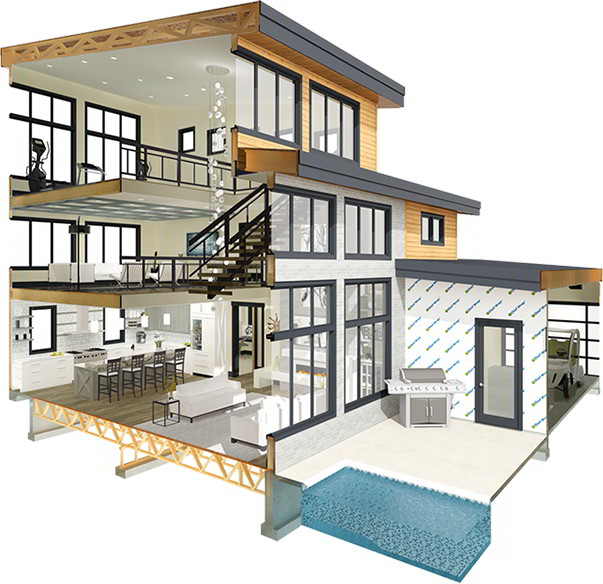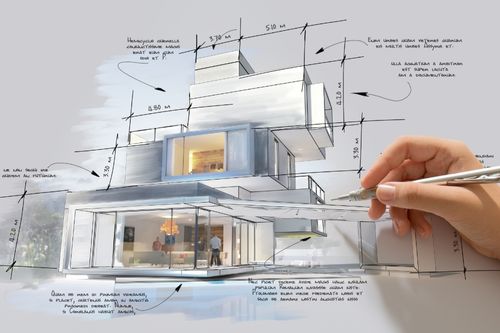How CDA Architects Combine Imagination and Performance in Modern Style
How CDA Architects Combine Imagination and Performance in Modern Style
Blog Article
The Influence of Technological Innovations on the Style Practices of Contemporary Architects
The rapid development of technical devices has substantially reshaped the style landscape for modern architects, cultivating unprecedented levels of technology and sustainability. Exploring these dynamics discloses a nuanced interaction between innovation and typical design methods, motivating a closer evaluation of what the future holds for building methods.
Advancement of Architectural Tools
Just how have building tools transformed the design and building processes over the centuries? The development of architectural devices has actually considerably impacted the efficiency, accuracy, and creativity of design and building.
With the advent of the Renaissance, the introduction of the compass and the protractor noted an essential shift. These tools made it possible for designers to accomplish greater precision in their styles, helping with the development of even more complex and in proportion buildings. The Industrial Transformation even more revolutionized building exercise with the introduction of mechanical tools and products, permitting larger and a lot more ambitious projects.
In the 20th century, the growth of computer-aided design (CAD) software program changed the landscape once more, providing designers with unprecedented capabilities in modeling and visualization. Today, progressed tools such as Structure Info Modeling (BIM) and parametric design software program remain to press the limits of architectural technology, allowing an extra integrated approach to style and construction procedures.
Enhanced Partnership in Layout
As innovation remains to develop, boosted partnership in layout has come to be a foundation of modern architectural technique. The combination of electronic tools such as Structure Information Modeling (BIM), cloud-based systems, and progressed visualization software application has actually transformed the method architects, engineers, and stakeholders engage throughout the design process. These tools promote real-time communication, enabling groups to share ideas, adjustments, and responses promptly, no matter geographical place.

Additionally, interdisciplinary cooperation has actually been structured with these technological developments, allowing designers to work more carefully with other professionals, such as city organizers and ecological experts. The result is a more natural strategy to make that considers various viewpoints and know-how. Eventually, enhanced collaboration in layout is not just a fad; it is necessary for creating cutting-edge, practical, and aesthetically pleasing architecture in a significantly intricate globe.
Sustainability With Technology
Sustainability in style has significantly ended up being linked with technological innovation, driving the market toward ecologically liable practices - cda architects. Contemporary designers are leveraging advanced innovations to minimize environmental influence while enhancing the performance of structures. One popular instance is the use of Building Info Modeling (BIM), which permits accurate preparation and resource allotment, minimizing waste during building and advertising energy effectiveness throughout a structure's lifecycle
In addition, clever materials and energy-efficient systems are being integrated into layouts to optimize resource usage. Technologies such as solar batteries and eco-friendly roof covering systems harness renewable energy sources, adding to minimized carbon impacts. In addition, the application of expert system in layout processes enables designers to mimic and examine power intake, leading choices towards even more lasting end results.
The combination of sustainable technologies not just straightens with international environmental objectives yet likewise satisfies a boosting demand from consumers for environment-friendly services. As architects embrace these technologies, the emphasis moves towards developing rooms that are not only aesthetically pleasing but additionally functionally lasting, consequently redefining the requirements of modern architecture. By doing this, modern technology functions as a driver for sustainability, allowing architects to design structures that respect and boost the all-natural atmosphere.
Challenges in Execution
While technological advancements in architecture hold terrific guarantee for enhancing sustainability, their execution typically experiences significant difficulties - cda architects. One primary obstacle is the high knowing contour related to brand-new technologies. Architects and building and construction experts may call for substantial training to efficiently make use of sophisticated software and devices, which can delay project timelines and increase prices
Additionally, the integration of arising technologies, such as Structure Information Modeling (BIM) and lasting materials, frequently requires collaboration across Visit Website multidisciplinary groups. This cooperation can be hindered by distinctions in know-how, workflows, and interaction styles, bring about possible problems and inefficiencies.
Financial restrictions better complicate the adoption of ingenious technologies. Numerous building companies, particularly smaller sized ones, may lack the resources to buy cutting-edge tools, restricting their ability to take on larger firms that can afford such investments.
Additionally, governing structures and building regulations may not equal technological innovations, creating obscurity and potential compliance issues. This difficulty can prevent designers from completely accepting brand-new innovations, as the danger of non-compliance may surpass the advantages. As a result, attending to these implementation challenges is essential for the successful assimilation of technical improvements in contemporary building methods.
Future Trends in Architecture
The obstacles connected with the application of brand-new modern technologies in design have motivated a reevaluation of future trends within the market. As architects navigate concerns such as sustainability, urbanization, and social equity, they are significantly adopting cutting-edge innovations to my website enhance layout performance and ecological performance.
One prominent pattern is the integration of expert system (AI) in the style process. AI devices can examine large datasets to educate design choices, enhancing both imagination and capability. In A Similar Way, Building Info Modeling (BIM) proceeds to develop, making it possible for real-time collaboration among stakeholders and facilitating structured project administration.
Sustainable design methods are additionally acquiring energy, with designers concentrating on adaptive reuse and regenerative style concepts that minimize resource intake and waste. The unification of wise products and eco-friendly energy resources will certainly even more improve the strength of buildings when faced with click here to find out more climate adjustment.

Conclusion
Technological advancements have considerably reshaped architectural layout techniques, helping with enhanced precision, cooperation, and sustainability. The integration of devices such as Building Information Modeling and parametric layout software program, together with expert system and smart products, equips designers to address intricate difficulties better. While execution may present specific barriers, the continued evolution of these modern technologies promises to drive technology in design. Future trends will likely better highlight sustainability and efficiency, inevitably redefining the developed environment.
Report this page